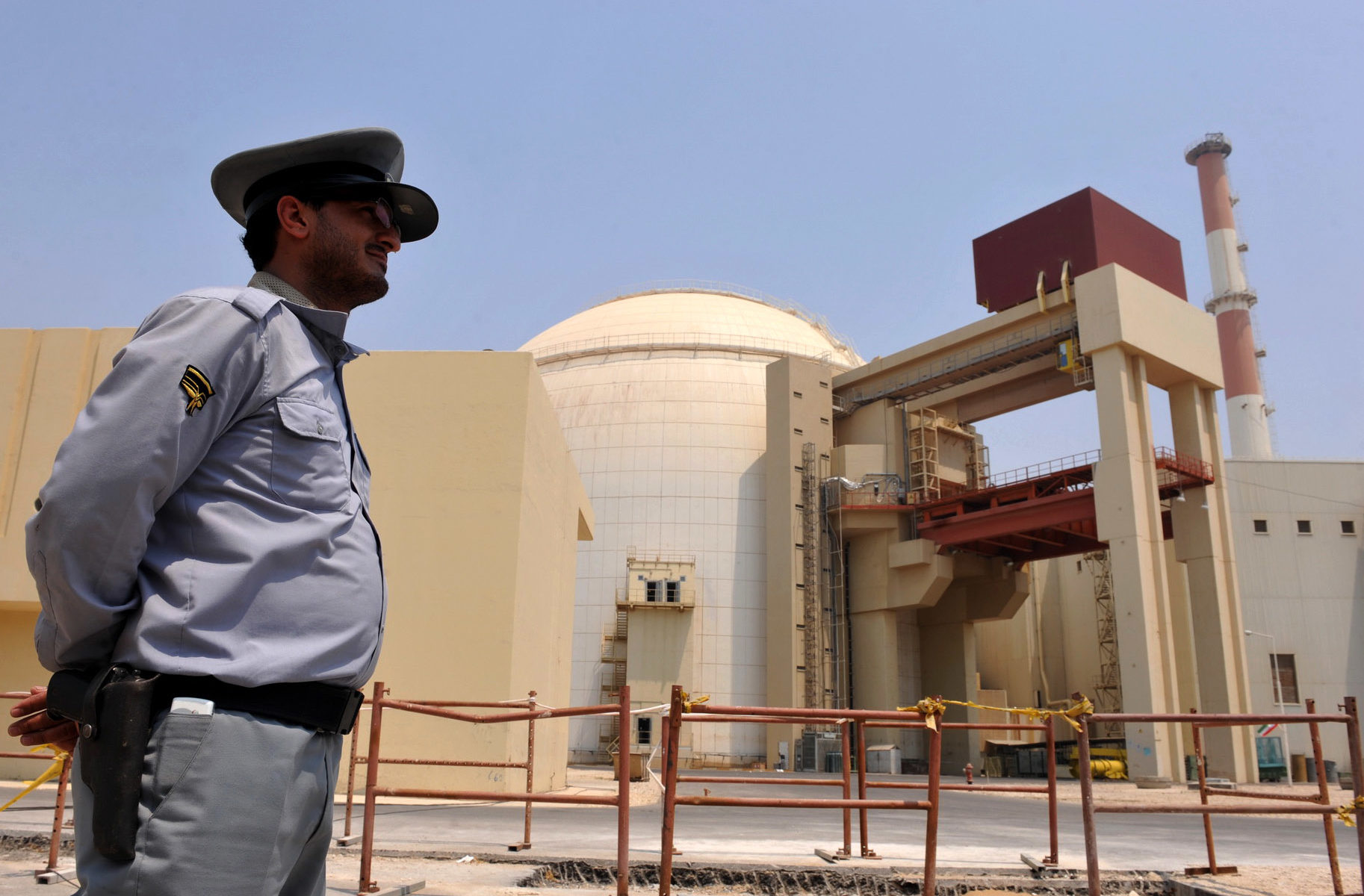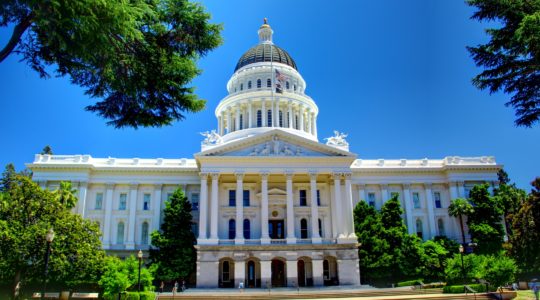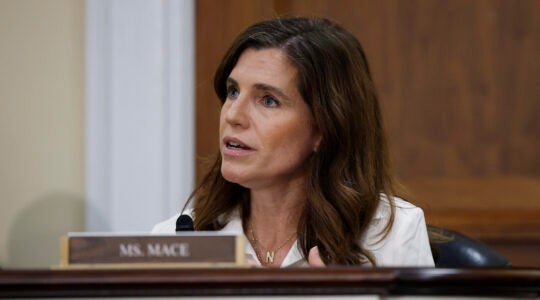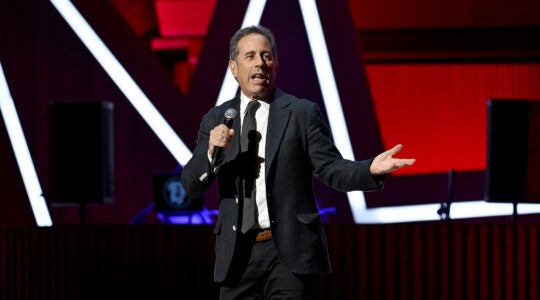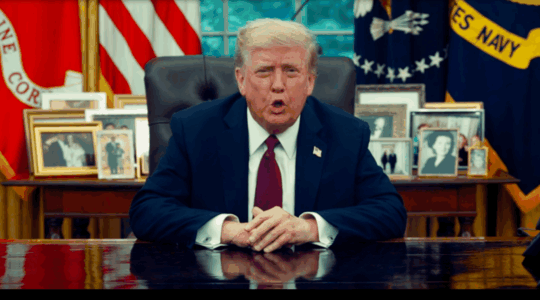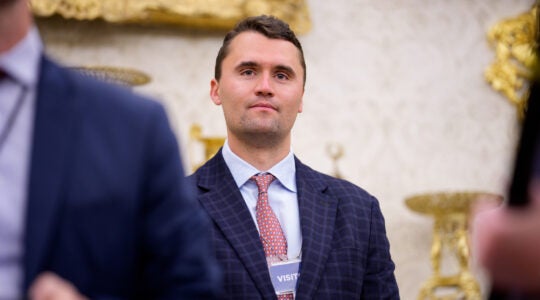WASHINGTON (JTA) — The road to the Iran nuclear deal did not start in November 2013, when the major powers and Iran launched formal talks. It did not begin in 2010, when the U.S. Congress passed the far-reaching Iran sanctions and the U.N. Security Council approved its own set of sanctions.
Rather, the road to the deal secured last week, which will limit Iran’s uranium enrichment in exchange for the lifting of international sanctions, began decades earlier. Here are some highlights on the way to the deal that now faces Congress’s yea or nay.
Mid-1950s to late 1970s
With U.S. backing, the shah of Iran develops nuclear technology as an alternative energy source. Toward the end of his reign, Mohammad Reza Shah Pahlavi begins to look into nuclear weapons capacity. It is not clear whether it is with the knowledge or support of the United States.
1979
A revolution overthrows the shah in January and Ayatollah Ruhollah Khomeini returns to Iran the following month — a week after promising to preserve the rights of Iranian Jews. His aides tell JTA that they may renew ties with Israel. But in May, the new regime executes Habib Elkanian, a former leader of the Jewish community, prompting calls from U.S. Jews for the imposition of sanctions on the regime.
On Nov. 4, Iranian students, with the regime’s blessing, take hostage 52 Americans employed by the U.S. Embassy, and 10 days later, President Jimmy Carter freezes $12 billion in Iranian U.S. assets — the first U.S. sanctions imposed on the regime. Nearly half of the blocked assets are in the overseas branches of U.S. banks.
1980s
Iran restarts its civilian nuclear program in 1984 and Iranian officials meet in 1987 with A.Q. Khan, the father of the Pakistani nuclear bomb, to discuss weaponizing their program. Meanwhile, Israel sells Hawk missiles to Iran in the mid-1980s at the behest of the United States as part of a complicated arms-for-hostages deal that culminates in a scandal for the administration of President Ronald Reagan.
READ: AIPAC to fight White House head to head in battle over Iran deal
1990 to 1992
Israel confirms importing oil from Iran in 1990, despite the regime’s declared hatred of the Jewish state.
By 1992, just-elected Prime Minister Yitzhak Rabin, who had authorized the sale of arms to Iran when he was defense minister, is concerned about intelligence that Iran is considering a nuclear weapon. Israel’s political parties, left to right, share concern at the prospect of a nuclear Iran and the government launches an effort to persuade other countries to isolate Iran. Rabin, during meetings with American Jewish leaders, urges them to leave Israeli-Arab relations to the Israelis but asks them to take on Iran.
1994 to 2000
The 1994 bombing of the AMIA Jewish community center in Buenos Aires, Argentina, kills 85 and spurs calls to isolate Iran. (The Iran-backed terrorist group Hezbollah is suspected in the terror attack.)
In 1995, Russia signs a deal with Iran to develop a civil use nuclear reactor at Bushehr, in southern Iran.
The American Israel Public Affairs Committee, working closely with the office of then-Sen. Alfonse D’Amato, R-N.Y., begins drafting legislation in 1994 targeting third parties dealing with Iran. Steve Grossman, then the president of AIPAC and a friend of President Bill Clinton and first lady Hillary Clinton, spends a cool evening on a White House balcony after a dinner party in the spring of 1995 smoking cigars and attempting to persuade the president to use his executive powers to impose sanctions. In May 1995, Clinton issues an executive order banning investment in Iran, and in 1995 and 1996, Congress passes and Clinton signs into law the Iran Libya Sanctions Act, which targets foreign entities doing business with Iran’s energy sector.
Soon, however, Clinton is faced with tough European opposition to the sanctions. He is also encouraged by the election of a relatively moderate Iranian president, Mohammed Khatami. Clinton begins to waive some sanctions, disappointing some in the pro-Israel community.
2001 to 2008
President George W. Bush sustains Clinton’s delicate engagement with the Khatami government, especially after the United States invades Afghanistan following the Sept. 11, 2001, terrorist attacks. (The U.S. and Iran have a shared enemy in al-Qaida.) However, Bush includes Iran in his “axis of evil” State of the Union speech in 2002 alongside Iraq and North Korea. Later in 2002, the Mujahedeen Khalq Iranian dissident group reveals that Iran is enriching uranium in Natanz and building a heavy water reactor in Arak. Bush, however, is preoccupied with plans to invade Iraq and does not devote much attention to Iran.
READ: Op-Ed: Iran nuclear deal built on a lie
The Khatami government, rattled by the initial success of the 2003 Iraq invasion, makes overtures to the international community to discuss placing limits on its nuclear activities in exchange for greater engagement. Bush does not want to directly negotiate with Iran until it ceases uranium enrichment, but he does consult closely with three European nations, Britain, France and Germany — the E3 — that enter into talks with Iran.
The talks are buried with the election in 2005 of a hard-line Iranian president, Mahmoud Ahmadinejad. The Bush administration leads the passage in the U.N. Security Council of resolutions targeting Iran’s nuclear sector and arms sales, as well as Iranian individuals. Under Bush, the U.S. Office of Foreign Assets Control builds an architecture of sanctions that includes persuading third parties not only to end dealings with Iran’s energy sector, but with its financial sector as well.
In a February 2006 meeting with Jewish leaders, Condoleezza Rice, the U.S. secretary of state, for the first time intimates that the United States would contemplate a military strike to keep Iran from going nuclear. However, two years later, in 2008, Israeli Prime Minister Ehud Olmert fails to get the go-ahead from Bush he believes he needs to launch an Israeli strike.
2009 to 2015
Newly elected President Barack Obama in March 2009 offers Iran’s people and leaders a message for Nowruz, the Iranian New Year, saying “greater opportunities for partnership and commerce” are available but they “cannot be reached through terror or arms, but rather through peaceful actions that demonstrate the true greatness of the Iranian people and civilization.”
In April 2009, the United States joins talks between Iran and five other major powers: Britain, France, Russia, China and Germany. But Ahmadinejad is reelected in June of that year, and in September, Obama joins other world leaders in revealing the existence of a second uranium enrichment plant embedded deep in a mountain in Fordow, near the holy city of Qom.
The Qom revelations accelerate legislation in Congress that would toughen Iran sanctions, dropping the threshold for banned investment in the energy sector from $20 million to $1 million in some cases and expanding bans to Iran’s financial sector. The legislation passes in 2010. Meanwhile, the same year, Obama’s team leads the passage in the U.N. Security Council of expanded sanctions that target Iran’s energy and financial sectors and restrict arms sales to the country.
READ: Christian Zionist group launches lobbying fund to oppose Iran pact
In subsequent years, the intelligence agencies of Israel and the United States disrupt Iran’s enrichment capacity through a computer virus, Stuxnet, and a number of Iranian nuclear scientists are assassinated, reportedly at Israel’s behest.
In September 2012, Israeli Prime Minister Benjamin Netanyahu, in a dramatic (and much mocked) United Nations speech, illustrates with a cartoon bomb diagram Israel’s version of the “red line” that cannot be crossed: Enough uranium enriched at 20 percent, a step before weaponization at 90 percent, to power a bomb. Netanyahu predicts that Iran could arrive at the red line within a year.
In June 2013, Iranians elect a relative moderate president, Hassan Rouhani. Just prior to the election and anticipating such an outcome, the United States begins secret negotiations with Iran to set up talks toward sanctions relief in exchange for nuclear restrictions. In November of that year, they arrive at a formula and announce a deal that ends Iran’s enrichment of uranium beyond civilian levels.
In January 2014, the major powers and Iran launch talks aimed at an agreement, and an increasingly wary Netanyahu mounts an effort to oppose what he sees as a dangerous deal, culminating in his March 2015 speech to Congress, organized with Republicans and without the knowledge of the White House.
In April of this year, the sides reach the outline of an agreement in Lausanne, Switzerland. In May, Congress passes a law that will allow it to disapprove of a deal within a two-month period. On July 14, after multiple extensions of a June 30 deadline, Iran and the six world powers arrive at a comprehensive agreement. Two days later, 172 Republican co-sponsors in the U.S. House of Representatives introduce a resolution of disapproval.
JTA has documented Jewish history in real-time for over a century. Keep our journalism strong by joining us in supporting independent, award-winning reporting.
